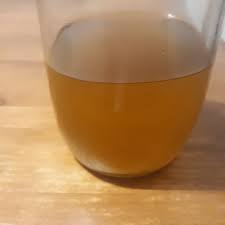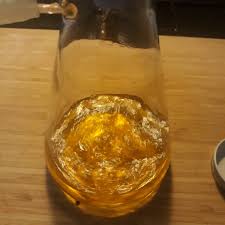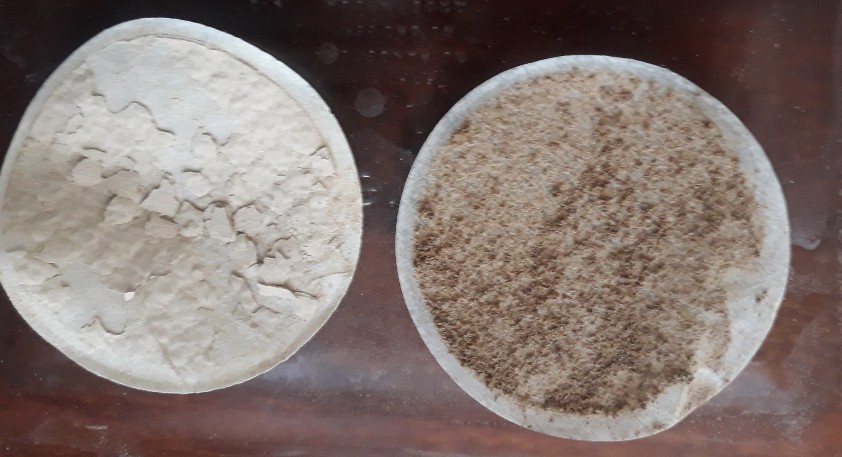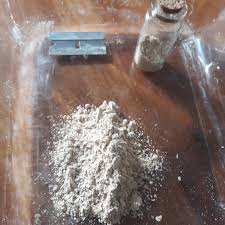Difference between revisions of "Ethyl Acetate Approach Harmala"
(→Introduction) |
(→Introduction) |
||
| Line 4: | Line 4: | ||
Thanks to everyone who has contributed or helped experiment to aid in refining/ improving this process: Loveall, Benzyme, Downwardsfromzero, _Trip_, and others. | Thanks to everyone who has contributed or helped experiment to aid in refining/ improving this process: Loveall, Benzyme, Downwardsfromzero, _Trip_, and others. | ||
| − | This Tek is still a work in progress<ref>Forum Link[https://www.dmt-nexus.me/forum/default.aspx?g=posts&t=93378]</ref> | + | This Tek is still a work in progress<ref>Forum Link[https://www.dmt-nexus.me/forum/default.aspx?g=posts&t=93378]</ref> however lab and test results have been confirmed and are very promising for a quick Tek. Feel free to contribute. More photo's to follow soon. |
| − | + | ||
Please take your time with your first extraction, although this is a quick and easy Tek you don't want to rush it and make a mistake. | Please take your time with your first extraction, although this is a quick and easy Tek you don't want to rush it and make a mistake. | ||
Revision as of 02:42, 30 August 2022
Contents
- 1 Introduction
- 2 Safety
- 3 Detailed Process
- 3.1 Base Water
- 3.2 Powder
- 3.3 Microwave
- 3.4 Water Bath
- 3.5 Pulling
- 3.6 Recovery/ Filter
- 3.7 Salting
- 3.8 Decant & Reclaim
- 3.9 Dissolve Goo
- 3.10 Base
- 3.11 Crash/ Filter TEK Complete
- 3.12 Convert FB Harmala to Harmala Citrate for Pharmahuasca
- 3.13 Lab Analysis
- 3.14 Further investigations
- 3.15 Reuse
- 3.16 References
Introduction
This Tek was inspired by Loveall's Cielo Tek, with the aim of cutting out manske steps to aid in yields and substantially quicken the process while maintaining purity. The quickest run has been 2.5hours with decent yields and purity.
Thanks to everyone who has contributed or helped experiment to aid in refining/ improving this process: Loveall, Benzyme, Downwardsfromzero, _Trip_, and others.
This Tek is still a work in progress[1] however lab and test results have been confirmed and are very promising for a quick Tek. Feel free to contribute. More photo's to follow soon.
Please take your time with your first extraction, although this is a quick and easy Tek you don't want to rush it and make a mistake.
Safety
Review ethyl acetate[2] and citric acid[3] safety information. Verify solvent MSDS, plastic compatibility, and clean evaporation.
This TEK is food safe if food grade materials are used.
Following this advice does not guarantee safety. It is up to each adult individual to make their own personal decisions.
Consumables
- 300ml water/ 600-800ml of distilled water (tap water works fine too)
- 25g Ca(OH)
- 100g of Syrian Rue seeds (B. Caapi should work too but is yet to be tested).
- 1lt ethyl acetate (sometimes sold as "MEK substitute")
- 10-15g of citric acid
- Sodium Carbonate
- 1lt Jar
Equipment
- Blender
- French press
- Kitchen scale
- Coffee filters, support basket, and funnel Or lab filter and vacuum pump.
- 1lt mason glass jars with lids
- Fridge
- Milligram scale
- Microwave
Detailed Process
Base Water
-Add 300ml of water to 25g of calcium hydroxide and mix to form 'base water'. Alternatively one can use sodium carbonate (this may negate the need for filtering later). Note: Sodium Carbonate has not been fully tested start to finish.
Powder
-Get 100g of rue seeds and grind them up, mix with 'base water'. A glass bender is quickest.
Microwave
-Microwave the rue/base mix until close to 2/3rd's of the water content is steamed off (use kitchen scales to measure this). As a guide a 750 watt microwave at 5-7min bursts should work fine. Mix between bursts. Several bursts will be required.
If interested, see further investigations for microwaving below.
Water Bath
-Prepare a warm water bath with boiling water and warm 1lt of EA. No open flames. (This step helps yields).
Pulling
-Place ground up 'base paste rue seed mix' in a french press. Using the french press conduct 6 pulls with the 1lt of warm EA. So 6x 160ml pulls approx (keep in mind rue seeds will absorb a little bit of EA). Carefully decant into 1lt jar(6x warm pulls at 1-2 mins each). Decant from the french press after each pull. Keep rue base mix and fresh EA in the warm water bath to improve yield (obviously in their respective containers).
Recovery/ Filter
-Approx just over 800ml of EA should be recovered and then filtered (filtering may not be necessary if one has used sodium carbonate as a base, this is still under investigation). Lab filter is recommended, coffee filters should work too.
Recovered vs Filtered
Salting
-Add 15g of citirc acid to the combined EA pulls (the approx 800ml of EA) and shake for 5-10mins (red/orange/yellow oil should form very fast). Orange/red goo forms at the base of the jar and the rest of the jar gets covered with sticky yellow goo (making it easy to decant). (This goo should crystalize if left for 24hours+. This is not necessary though, the goo makes decanting easy so one can decant right away).
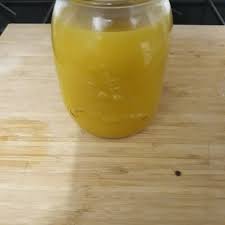 (Initial clouding when adding citric acid).
(Initial clouding when adding citric acid).
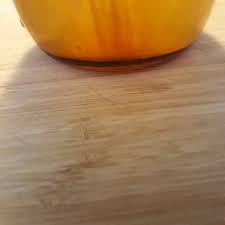 (Don't let the photo deceive you the whole Jar is covered in sticky yellow harmala citrate residue).
(Don't let the photo deceive you the whole Jar is covered in sticky yellow harmala citrate residue).
Decant & Reclaim
-Decant EA (this can be cleaned and reused next extraction). One can also add a little bit of EA to the citrate stuck to the jar to clean it up a little bit but it is not necessary. Again decant this EA.
Dissolve Goo
-After the tiny amount of EA still left in the jar evaporates off the goo, add minimum 850ml of warm water to the citrate goo, it will dissolve fairly quickly.
(One can ratio it down if using less seeds). The more water used gives a cleaner product (in appearance anyway). One can use even more water 1lt-1.5lt to achieve a whiter end result (see further investigation notes on use of too much water in this step).
Above is a photo comparing the final end result, more vs less water used in this step. (1lt vs 300ml)
Base
-Base slowly with sodium carbonate (you can shake up the jar to get excess sodium carbonate to dissolve once the acid is neutralized). Add enough sodium carbonate until the harmala starts to crash out then add a little bit more.
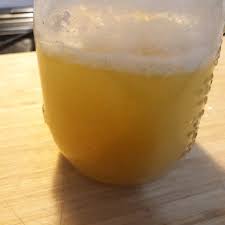 Initial basing & precipitation.
Initial basing & precipitation.
Crash/ Filter TEK Complete
-Harmala will crash out quickly. Some of the FB harmala will float to the top, this needs to be left to cool. (Sticking the jar in a freezer appears to speed up the process and harmala crashes as it cools. The floating harmala should settle. This should not take long).
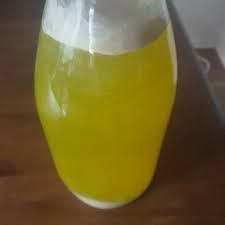 Crashing of Harmala (some will float to the top some settles to the bottom).
Crashing of Harmala (some will float to the top some settles to the bottom).
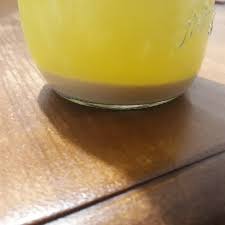 As a rule of thumb I wait for majority of the floating harmala to settle to the bottom. This rarely exceeds the 2 hour mark, again usually a lot quicker - as little as half an hour.
As a rule of thumb I wait for majority of the floating harmala to settle to the bottom. This rarely exceeds the 2 hour mark, again usually a lot quicker - as little as half an hour.
Once it has finished crashing out filter and dry the product (lab filters or coffee filters should work fine).
Well done this should have been a quick and easy run. 3.7%+ is usually the minimum percentage pulled on first run. The process can be repeated on spent material and re-pulled with hot EA to get over 5%.
Final product is usually off white almost greyish in color harmala. It doesn't necessarily represent purity in this Tek and color appears to be dependent on how much water was used during dissolving and basing step. If you
look at lab sample B vs C, sample C had extra clean up steps added (and although the signals appear slightly clearer) sample C came out more of a tan color than off white/grey.
If one is after a purer looking product you can do a 5% ammonia wash during the final filter before drying (this has reported to clean up harmala).
No need to leave the product overnight to crash, if left for too long (say 24hrs+) some impurities appear to crash out with it. The final product in this step should crash out quick and should/ can be filtered within a hour or 2 (often quicker).
Once filtered and dried you have the final product.
(Keep the sodium carbonated water after filtering, more harmala may crash out overnight. It usually appears more impure by color and may contain impurities though an analysis has not been confirmed. It is likely still useable)
Convert FB Harmala to Harmala Citrate for Pharmahuasca
Initially the citric acid crashes out a goo. However, once clean freebase (FB) Haramla is obtained one can dissolve it in hot EA (with the help of a few shakes of the jar) and then add citirc acid at about 20mg per ml of EA. This should give you nice clean yellowish harmala citrate crystals. They may be slightly sticky.
200mg FB harmala is a good dose to convert for pharmahuasca (for full MAO-inhibition). FB harmala can also be used for pharmahuasca depending on your stomachs sensitivity (however, it all gets converted to HCL in your stomach anyway). How the dose is taken varies from person to person and Nexus forums have discussed this extensively, please check the forum and or experiment to see what works for you.
Lab Analysis
Above is harmala lab analysis results. Figure A is the traditional 3x Manske, figure B & C are from the EA approach (B & C were conducted with slightly different variations). Figure B is the standard EA approach TEK as written above. The peaks indicate very clean harmine/harmaline. All main peaks can be attributed to harmala even 197 represent harmala with the loss -CH3 or and 169 is likely loss of -OCH3 functional groups during LC-MS. Results run in positive mode adds M 1+.
Further investigations
-Sodium Carbonate should be usable as a base for this Tek but it's yet to be confirmed.
-Chemical drying solvent after pulls only slightly changes the end result/ purity and is not necessary based of lab results..
-A mini A/B at the end for clean up does not appear to change end result/ purity (it will likely make the harmala darker in appearance, reasons unknown).
-Other acids are yet to be tested. Fumaric acid was briefly tested and should work. Phosphoric acid has been limitedly tested appears to behave like citric acid.
-Microwave route may be unnecessary as eventually discovered with the Cielo Tek. If this is the case, water content in the first step may need to be reduced below 300ml. This may be like the Cielo Tek and require more water to facilitate efficient pulls, thus may need to be fine tuned. And like the Cielo tek may not need microwaving. However for now, those ratios and the microwave step should work fine so stick with these values and the use of a microwave.
-Dissolving the goo in more water appears to give a purer looking product, using too little amount of water gives a very impure looking product. The ideal ratio is yet to be worked out. This may not affect purity to a great degree. Lab results have shown color doesn't necessarily equal purity in this tek. More water may lengthen the time needed to crash out harmala and or reduce yields. Note, this doesn't seem to be the case but further tests are needed.
-This process will likely work with B. Caapi but has yet been tested.
-Butyl acetate is currently being tested as an alternative to EA.
Reuse
Reusing solvents is encouraged[4] at the DMT nexus.
Wash spent extract with sodium carbonate saturated water (35% by weight). About 1/5 of the solvent volume as saturated water is enough. Shake vigorously (emulsions do not form). CO2 bubbles may be visible during citric acid neutralization. Keep an eye on any bubbles and release any pressure buildup regularly. Neutralization can be optionally verified with pH paper. Rest washed solution until clear (up to a day or more).
Remove the water layer with a pipette or separatory funnel. Freezing the solvent and filtering the ice slush that forms with a metal strainer is also an option. Finally, decant off any excess solid sodium carbonate/citrate. CaCl2 (sold as deicer, calcium hardener for pools and sometimes is the only ingredient in moisture absorbers tubs) can be used to ensure there is no water still left in the EA.
References
Ethyl Acetate Safety [1]
Citric Acid Safety [2]
Reusing Solvent [3]
Cite error: <ref> tags exist, but no <references/> tag was found
